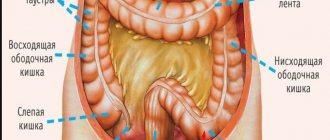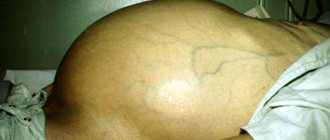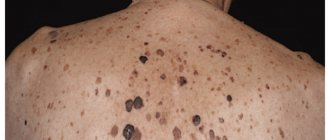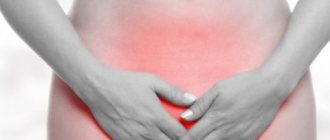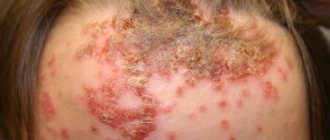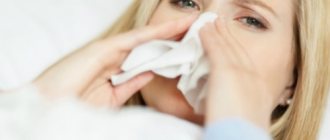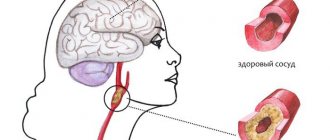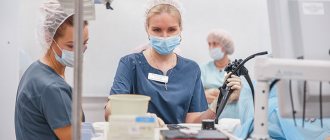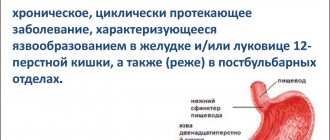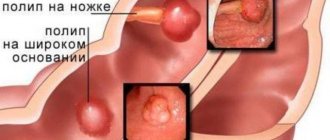Diverticula are pouch-like protrusions on the walls of the intestine. In a third of all cases, these formations are found in the sigmoid colon, and a little less often in the esophagus and duodenum. Colon diverticulosis is most common in men and women over 40 years of age, but there are cases of congenital diverticulosis.
In certain situations, the disease leads to serious complications that cannot be eliminated without surgery.
Symptoms and signs
Diverticulitis is characterized by many symptoms, but the problem is that very often they are similar to the symptoms of other diseases: for example, problems with the kidneys or female genital organs. But a person should still be alert to the following signs of the disease:
- pain in the lower abdomen. Usually it is point-like, it bothers only in a specific place - and it can hurt for several days, then fading, then starting again. The sensation intensifies with sudden muscle contractions: during laughter, coughing, physical activity;
- increased pain after bowel movements, during pressure;
- bowel disorders - intestinal diverticulitis manifests itself as both constipation and diarrhea;
- the presence of blood in the stool - usually the bleeding is not very abundant and is observed only in a tenth of patients;
- fever, chills. When it comes to diverticulitis, symptoms of this nature are rare, but they are also possible;
- loss of appetite - the patient does not feel like eating;
- nausea, vomiting, general weakness of the body - these signs of diverticulitis are very similar to the symptoms of poisoning.
If a patient has intestinal diverticulitis, the symptoms, although misleading, are still quite pronounced and bright, and therefore require immediate consultation with a doctor for a thorough examination.
Another important clarification about diverticulitis: the symptoms in women and men will be similar, although in the latter this disease is less common. In this case, we are talking only about the prevalence of the disease, but not about the fact that it manifests itself in different ways. The only peculiarity is that women can confuse this disease with “female-style” ailments, but there are nuances here, because there will still be some signs similar to poisoning.
Incidence of diverticular disease
Of all the diseases of the colon, intestinal diverticula are one of the most common in the modern world. The incidence of diverticular disease averages 20% in European countries; moreover, in older age groups of the population (60–80 years), the incidence increases, reaching 40–50%, and among patients over 80 years of age, the incidence reaches 60–65%. In our country, diverticula of the large intestine are found in approximately 17-28% of gastroenterological patients. The incidence of the disease in men and women is approximately the same.
Reasons for development
Diverticulitis of the sigmoid colon and other parts of the intestine is caused by a number of reasons:
- eating foods that don't have enough fiber. For proper intestinal function, a person needs to consume a sufficient amount of dietary fiber;
- complication due to infectious colitis, intestinal infections - the risk of a problem occurring against the background of weakened immunity is especially high;
- decreased muscle tone and deterioration of peristalsis - as a rule, this happens against the background of age-related changes, then colon diverticulitis manifests itself;
- dysbacteriosis, which also entails a general decrease in immunity;
- infection with worms, as a result of which the intestinal microflora is disrupted, the mucous membrane is damaged - and because of this, diverticulitis of the sigmoid colon begins;
- heredity is also one of the significant factors.
Some of the factors that cause intestinal diverticulitis are something that can be avoided if you lead a healthy lifestyle and monitor your condition, regularly visiting doctors for prevention and timely treatment.
Why does pathology occur?
The colon is part of the large intestine. It is divided into a transverse, ascending and descending section, which passes into the sigmoid segment which borders the rectum. In the large intestine, water absorption is completed and its own vitamins are synthesized. Under the influence of various reasons, changes occur in the tissues of the organ, leading to thinning of the walls and the formation of diverticula in the intestine. In older people, intestinal motility decreases, resulting in constipation. The accumulation of feces leads to deformation of the walls of the organ.
In addition to the natural aging of the body, the causes of diverticulosis in the colon include:
- Poor nutrition, insufficient intake of dietary fiber.
- Undergoing surgeries and colon injuries.
- Infectious bowel diseases.
- Frequent constipation.
- Congenital weakness of the muscle layer of the intestine.
All these factors contribute to increased pressure on the intestinal walls, which leads to their atrophy - thinning and decreased muscle tone.
Detection of congenital diverticula of the descending colon is extremely rare. Their appearance is associated with disruption of intestinal formation in the prenatal period.
Risk factors
Before you learn how to treat diverticulitis, it is worth addressing the risk factors. In this case, these include the already mentioned heredity, age, as well as poor nutrition and lifestyle, which contribute to impaired peristalsis. For example, people who sit a lot, hardly move, and have weak muscles are at risk. Many people hardly associate sports and peristalsis, but developed abdominal muscles really help the intestines to function properly. But you can’t get too carried away with heavy sports - otherwise there will be a backlash.
We also include anyone who does not follow the drinking regime into the risk zone - without a sufficient amount of moisture, the contents of the intestine become too dense, which can cause damage to its walls. Those who abuse bad habits, do not follow basic hygiene rules and do not take good care of their health are also in danger.
Physiotherapy
Regular physical exercise plays an important role even for those patients who had to undergo surgery. For such patients, doctors recommend devoting the first days to leisurely walks in the fresh air. A little later, you can slightly increase the load and perform more complex exercises.
The famous American doctor Alduri has developed an entire program regarding the treatment of diverticulosis without medication. His program addresses many issues. Special attention was paid to nutrition and physical activity. Many patients of both sexes took part in his studies. This gave a positive result. Therefore, the recommendations presented here are compiled based on his teachings.
The doctor claimed that most men who lead a sedentary lifestyle are susceptible to this disease in the first place. Exactly how physical culture counteracts the formation of diverticula has not yet been confirmed scientifically. But there is confidence that it gives positive results.
Lower abdominal pain
Intestinal contents pass faster during exercise, relieving pressure in the sigmoid colon. Blood circulation improves, which strengthens the intestinal walls and prevents the formation of new growths.
Important! According to the author’s advice, you can start the complex only after consulting with your doctor.
- Slow walking five times a week, but taking into account age and physical abilities. Gradually the walking turns into a slow run.
- Run. Don't run fast, just jog. The load can be gradually increased.
- Exercises. It doesn't matter what kind of exercises you do. These are complexes designed for the abdominal and pelvic muscles.
Don't try to do the exercises with zeal. Fatigue may be present, but minor. A person should feel a surge of strength, but not exhaustion. For those in better shape, cycling and swimming in pools are recommended. Most patients are elderly people, so you shouldn’t put too much physical stress on your body.
Diagnosis of diverticulitis
To diagnose diverticulitis, symptoms are not the only thing the doctor will rely on. This will require a whole range of research:
- consultation with both a gastroenterologist and a proctologist. Palpation, examination, history taking;
- colonoscopy;
- radiography with contrast;
- Ultrasound of the abdominal organs;
- laparoscopy (in some cases);
- blood biochemistry (will show inflammatory processes in the body).
It is important to understand that many tests, even if they cause distress for the patient, are very important to identify diverticulitis, the treatment of which should be different from other problems. The same colonoscopy is one of the most effective tools that allows you to distinguish between inflammation of diverticula and ulcerative colitis, intestinal obstruction, and colon tumor. And the more accurate the diagnosis, the higher the chance that the doctor will select a high-quality, working treatment.
In our clinic in the center of Moscow, diagnostics are carried out at the highest level - only using modern, most effective and safe equipment. Thanks to this, if intestinal diverticulitis is diagnosed, the treatment will also be of high quality.
Complications of pathology
Colon diverticula are accompanied by the following complications:
- the formation of malignant tumors;
- intestinal obstruction;
- fistula formation;
- bleeding;
- diverticulitis (inflammation of diverticula);
- violation of intestinal integrity (perforation);
- abscess, phlegmon;
- development of peritonitis.
Complications pose a serious danger to the health and life of the patient, sometimes causing the death of the patient. Severe complications can be prevented with timely diagnosis and treatment of the disease.
Treatment
When a diagnosis of diverticulitis is made, treatment is prescribed individually, depending on the patient’s condition. In some cases, treatment in a medical facility is required; if the situation is not so advanced, you can be treated at home, periodically visiting the clinic.
Diverticulitis is treated in the following ways:
- drug therapy. This usually involves taking antibiotics;
- a strict diet for diverticulitis with a sufficient amount of fiber, without harmful foods;
- surgical intervention (in very complex, serious cases during exacerbation or complications).
The outcome of the disease will largely depend on the patient: on his timely visit to the doctor, compliance with all recommendations and, of course, the right lifestyle.
Nutrition for diverticulosis
If the nutrition of most patients were correct, most patients could avoid such an unpleasant fate. The attending physician prescribes a diet for diverticulosis of the sigmoid colon. The basis should be foods rich in fiber:
- nuts, preferably almonds;
- dried mushrooms;
- green pea;
- figs;
- dried apricots;
- mango;
- ginger;
- tomatoes;
- cabbage;
- avocado.
In order to prevent irritation of the intestines and stomach, all dishes are steamed, boiled or baked in the oven. For such dishes you can use potatoes, skinless poultry, sea fish and seafood, veal, and lean pork. It is recommended to consume fermented milk products only according to the decision of the attending physician, as they can cause fermentation and gas formation.
Important! Your daily diet must include foods rich in fiber.
Your daily diet should include foods rich in fiber.
Meals should be taken 5-6 times a day in small portions. In order for food to be better absorbed, many nutritionists recommend using a separate nutrition system, drinking still water, tea without sugar, and rosehip decoction. It is generally better to exclude sugar and replace it with honey. To prevent constipation, you can eat prunes.
Prevention
Preventive measures for the formation of diverticulitis look like this:
- a healthy lifestyle with proper nutrition, drinking regimen and sufficient exercise;
- maintaining the immune system in good condition - for example, taking the necessary vitamins during the cold season;
- timely solution to any problems related to the intestines, be it diarrhea or constipation.
Diverticulitis, the symptoms and treatment of which are already clear to you, is not for nothing called an age-related problem. Very often it arises against the backdrop of a combination of factors that a person has ignored for a very long time and did not take into account. If you take good care of your health, you can significantly reduce the risk of such a problem.
Classification of diverticular disease
- Uncomplicated.
This form is detected accidentally during an X-ray or endoscopic examination of the intestine. Blood tests usually show no changes. The examination must be carried out to assess the extent of intestinal damage, prognosis of the course of the disease and the choice of a method for preventing complications or treatment. - Complicated
, occurring with an acute inflammatory process (diverticulitis, diverticular infiltrate, diverticulum perforation, abscess, peritonitis), a chronic inflammatory process, as well as bleeding. A chronic process includes situations when inflammation cannot be eliminated within 6 weeks, or it occurs again. In severe cases, an infiltrate, narrowing of the intestine, or a fistula from a destroyed diverticulum may form.
How to make an appointment with a gastroenterologist
You can make an appointment with a gastroenterologist at Meditsina JSC (academician Roitberg’s clinic) on the website - the interactive form allows you to select a doctor by specialization or search for an employee of any department by name and surname. Each doctor’s schedule contains information about visiting days and hours available for patient visits.
Clinic administrators are ready to accept requests for an appointment or call a doctor at home by phone.
Convenient location on the territory of the central administrative district of Moscow (CAO) - 2nd Tverskoy-Yamskaya lane, building 10 - allows you to quickly reach the clinic from the Mayakovskaya, Novoslobodskaya, Tverskaya, Chekhovskaya and Belorusskaya metro stations .
Traditional medicine tips
Healing infusion
Centuries-old traditional medicine recipes will help avoid complications, and for some, even the disease itself. For this it is recommended to use:
- aloe juice;
- flax seeds;
- plantain seeds;
- herbal preparations;
- echinacea;
- dill;
- nettle;
- parsley;
- bran;
- honey;
- linseed oil.
Herbal decoctions. For their preparation, herbs are used that have a laxative, soothing, and wound-healing effect. To prepare the collection, take chamomile, plantain, yarrow, echinacea, nettle, mint, motherwort, and mix them in equal quantities in one container. For one dose, you need one tablespoon of this mixture, which is poured with a glass of boiling water, infused and drunk. For each meal you need to prepare a new portion.
Rose hip. Rosehip decoctions can strengthen the intestinal walls and improve blood circulation. But this is a drink that has a fixing effect. Therefore, doctors do not recommend drinking decoctions made only from rose hips. You can add hawthorn. To prepare such a vitamin drink, you must use a thermos. Place two tablespoons of fruit in a liter thermos and pour boiling water over it. It is better to prepare the decoction in the evening. In the morning you don’t have to strain, but divide the entire volume throughout the day and drink it in equal parts with the addition of honey.
Tea with rosehip
It is recommended to drink 30 drops of aloe juice daily. You can add rosehip to the decoction if the juice is unpleasant, or dilute it with honey. There is no need to limit honey; it is a good option to completely replace sugar.
Bran. People with this diagnosis or those who want to avoid the disease should have bran in their diet constantly. This is the richest source of fiber, which is harmful to diverticula. The same can be applied to bran bread.
One tablespoon of bran is poured into a glass of low-fat kefir or milk, stirred and drunk morning and evening. This treatment is progressive: the daily dose of bran should be increased by one spoon. Increase consumption to 10 spoons, then reduce. You don’t have to take a break, but continue in the same order.
Oatmeal or flaxseed jelly. Mucus is very beneficial for the intestines, and you simply cannot find a richer source than oats and flax. These two components can be used separately, or you can make a mix of them. But first they are ground in a coffee grinder, diluted in hot milk or water.
To avoid causing diarrhea, it is better to use skim milk and dilute it with boiled water. Add two tablespoons of the dry mixture to a glass of hot liquid. After this, you need to cover, wrap and let it brew for half an hour. Can be accepted. It is advisable to take two glasses of jelly a day, prepare one in the morning before breakfast, the other in the evening an hour before bed.
Diet
Since diverticular disease occurs much more often in people who limit their intake of vegetables and fruits, all patients with diverticulosis need to use foods high in plant fiber and pectin. Wheat bran (especially coarse bran) is very useful, which significantly reduces the pressure inside the intestine and accelerates the rate of movement of contents through the intestines.
It is imperative to exclude all foods that cause increased gas formation (legumes, lentils, grapes, sauerkraut, butter and yeast dough, onions) and constipation (blueberries, rice). It is also advisable to exclude seeds, fruits with a large number of grains and excessively coarse fiber (persimmons, pineapples, turnips, radishes, radishes).
Clinical manifestations
Most often, symptoms of colon diverticulosis include impaired motor-evacuation function of the intestine and pain.
The pain bothers the patient constantly, intensifying during meals and constipation. Pain relief occurs after defecation. The localization of unpleasant symptoms depends on the location of diverticulosis. Thus, with diverticulosis of the left colon, pain is localized in the left iliac cavity. If the right sections are affected, pain in the right iliac region is characteristic.
Impaired intestinal motility is expressed either by constipation or diarrhea syndrome. Nausea and vomiting may also occur.
In 1% of cases, patients with diverticulosis develop gallstones and diaphragmatic hernia, which is called Seita's triad. In this case, the clinical picture is more varied.
Forecast
The prognosis is usually favorable if the disease is detected in a timely manner and the necessary preventive and therapeutic measures are started, provided that the patient follows all the necessary recommendations. However, if the need for prevention is ignored, diverticular disease can lead to the development of severe complications that threaten the life and health of the patient. Moreover, the disease is more common among older people who have a variety of concomitant diseases and lower body resistance.
